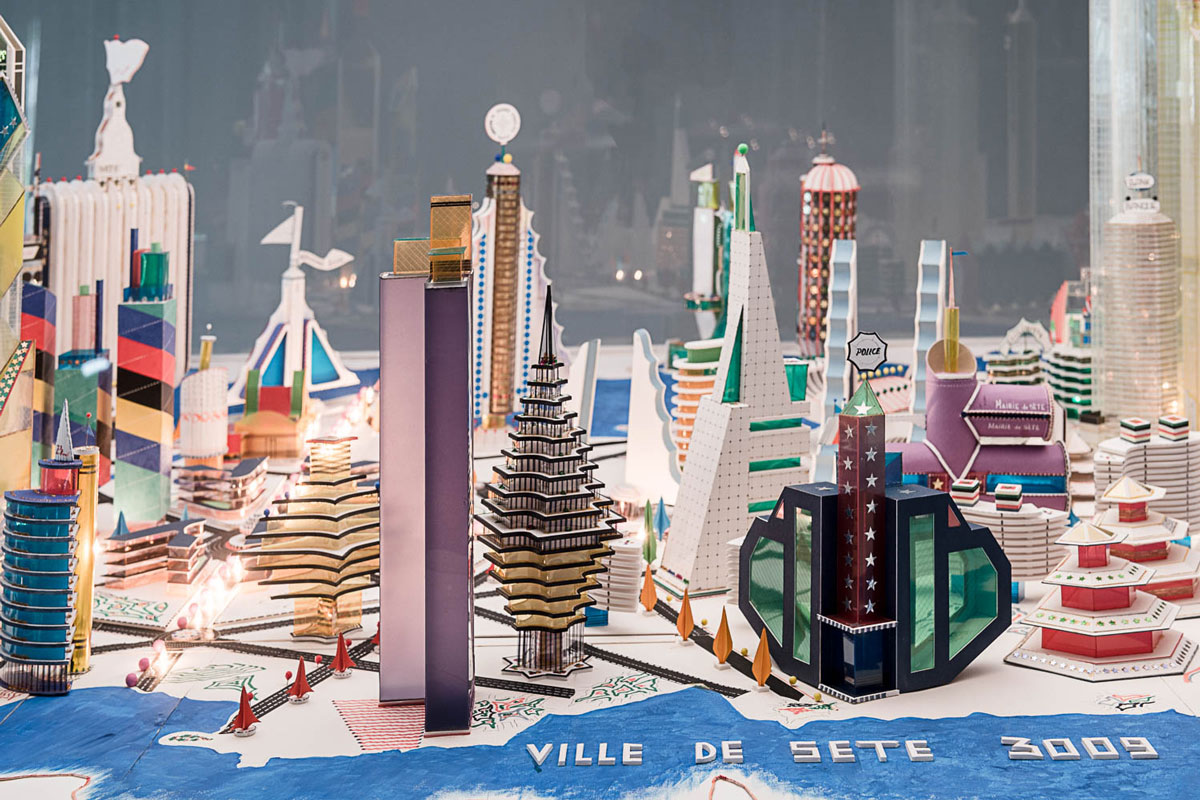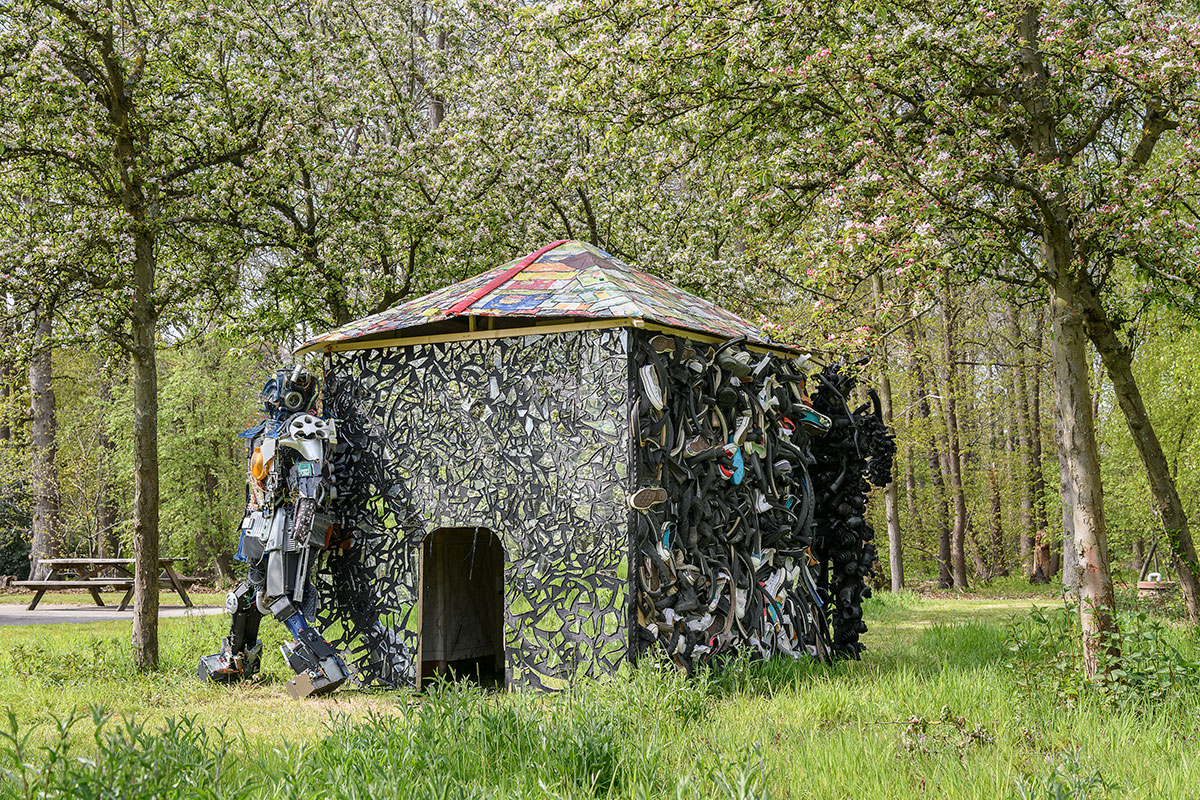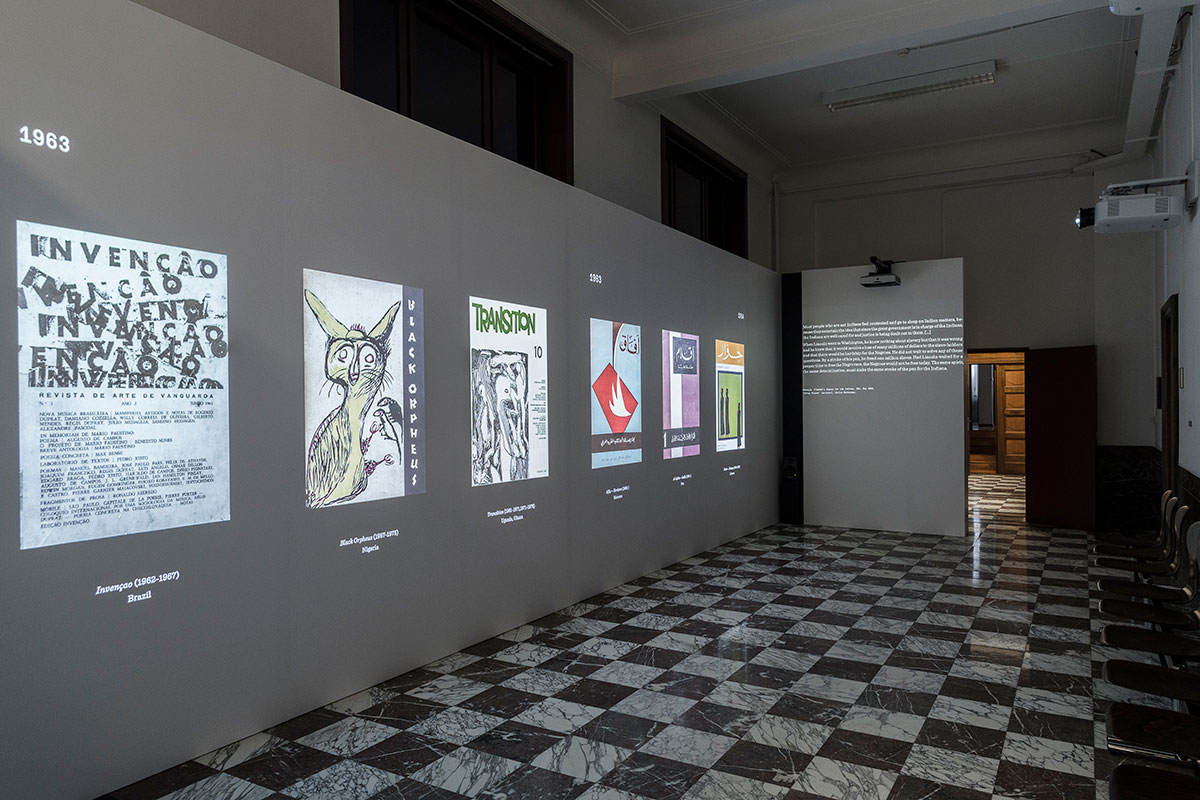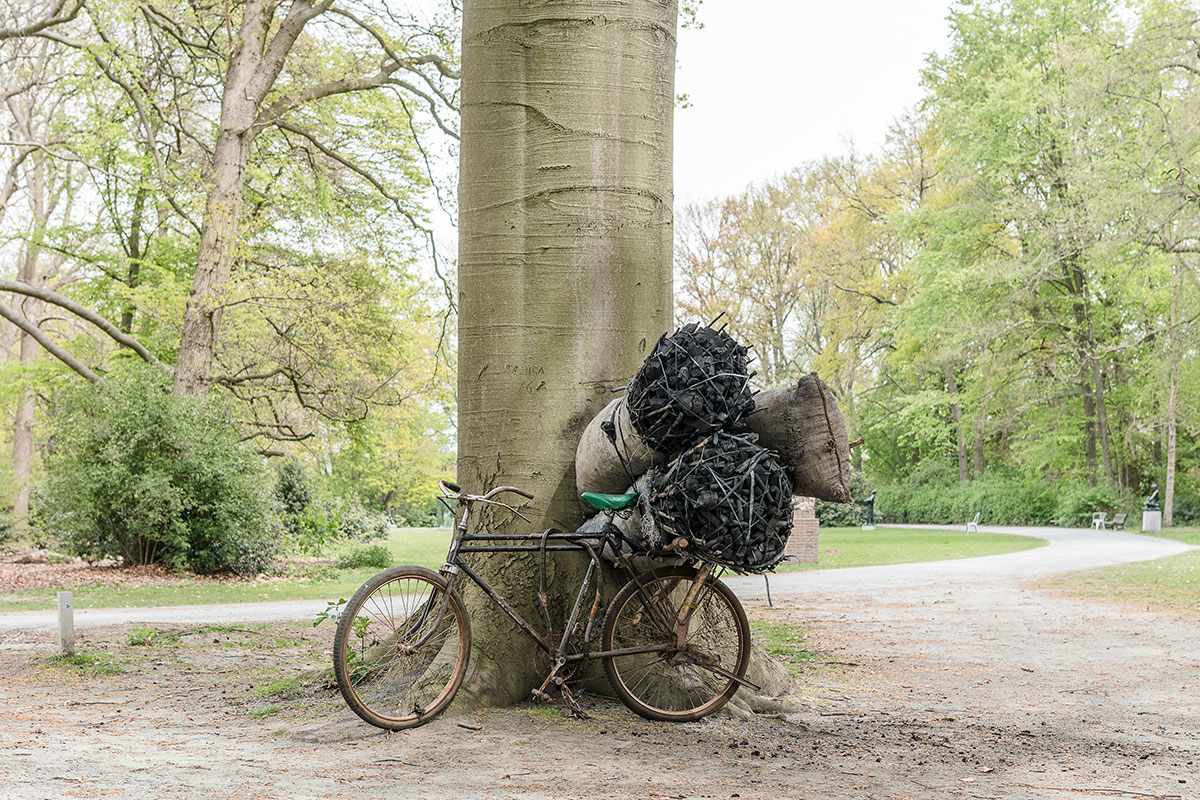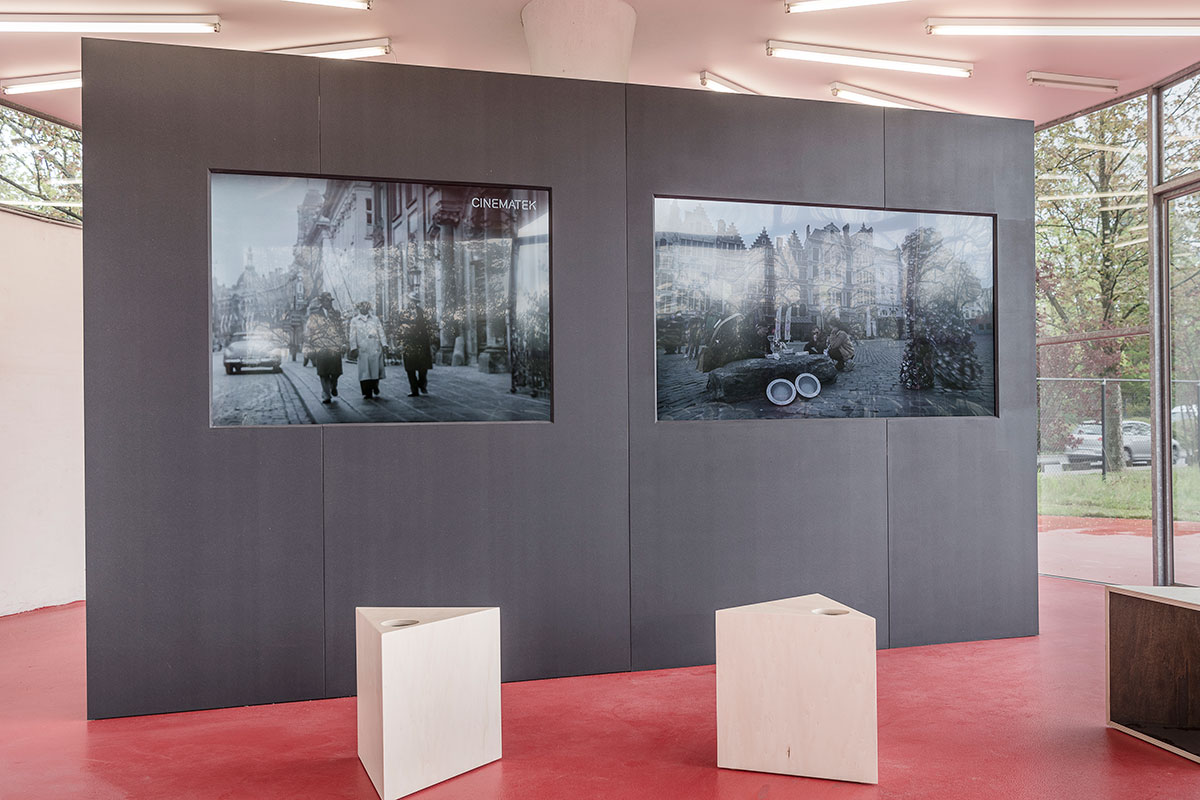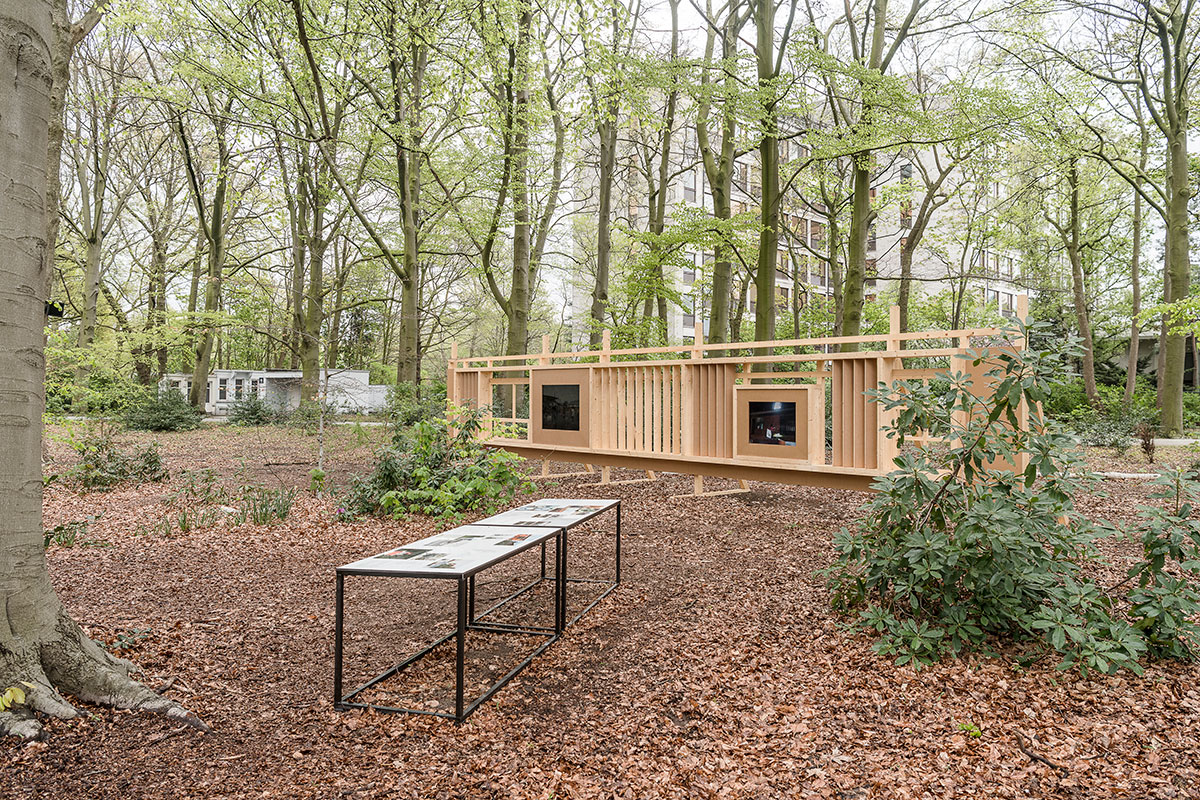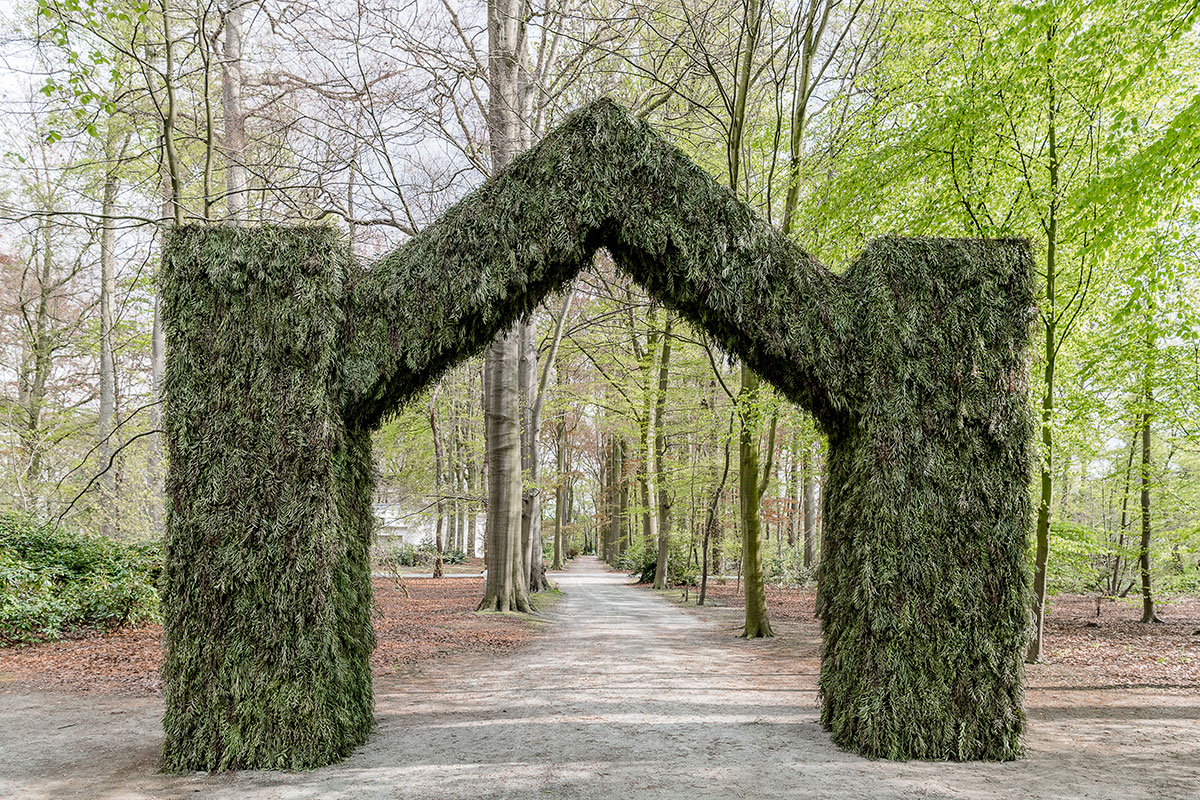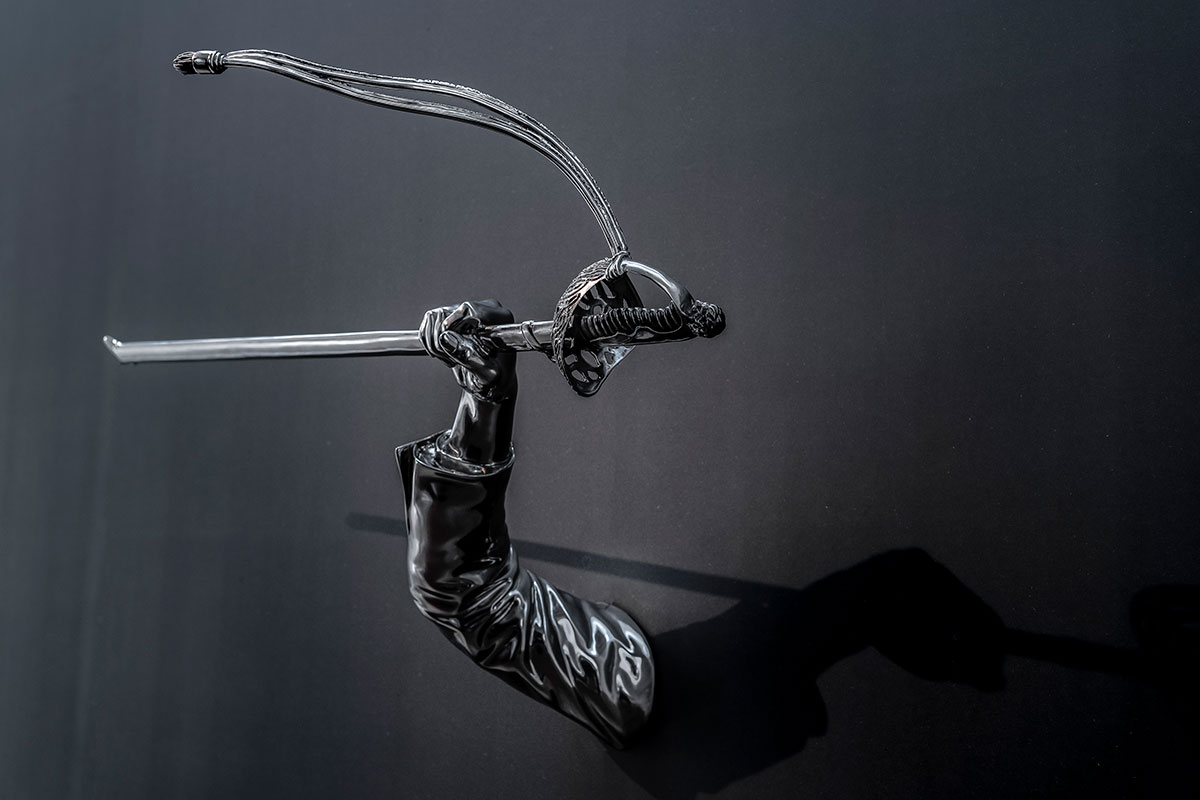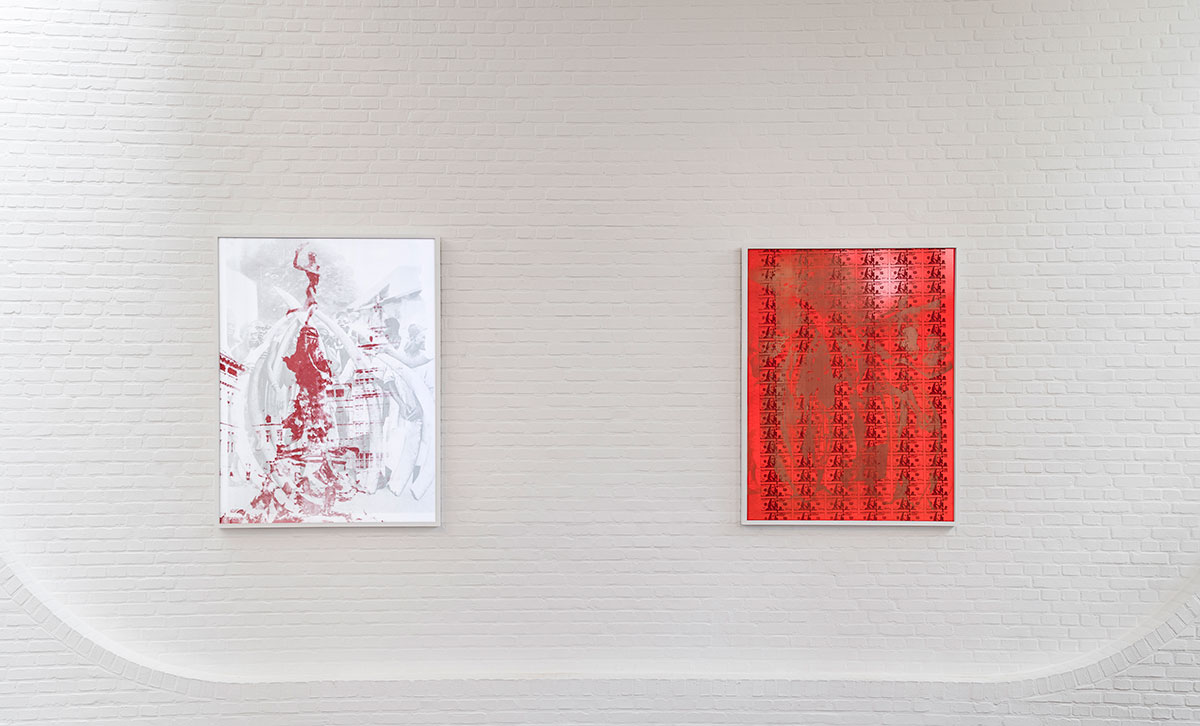ART-PRESENTATION: Congoville
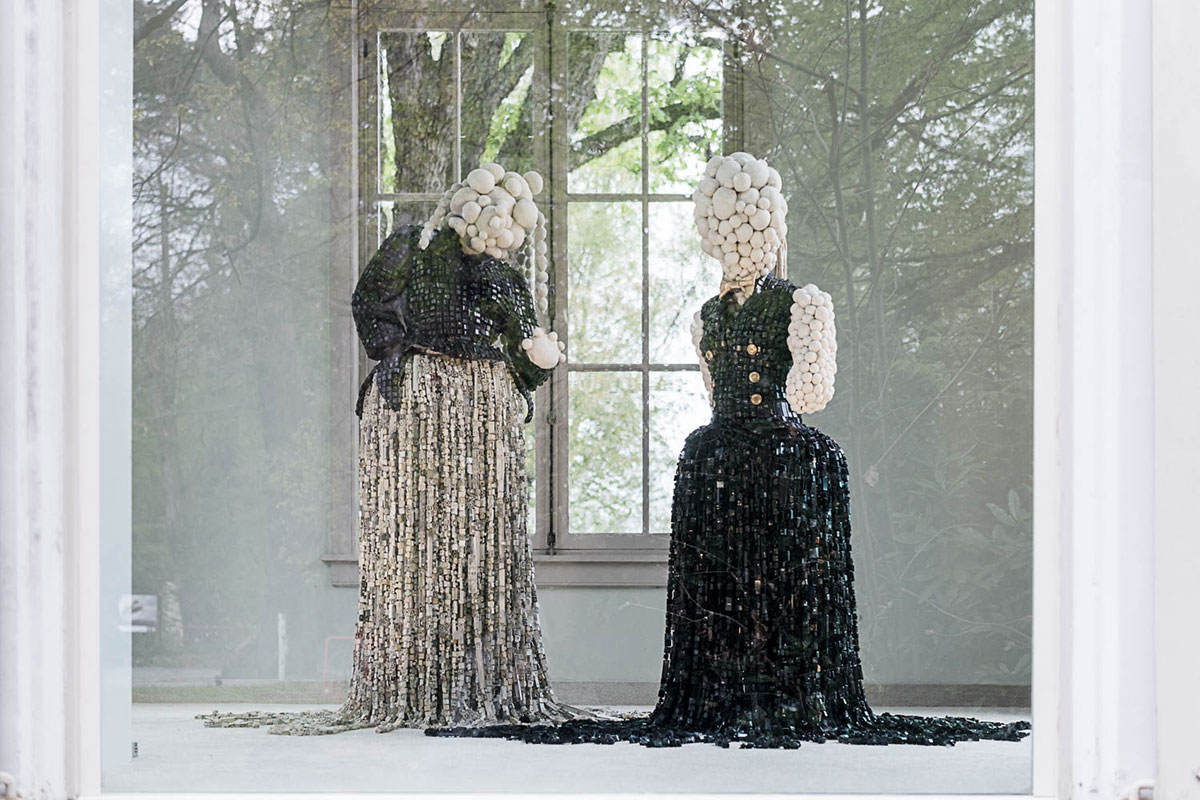 Congo was colonized by Leopold II, king of the Belgium from 1885 to 1908 and was named Free State of Congo. During this period it remained in the clutches of colonialism. King Leopold II of the Belgians was interested in the making of colonies for securing the raw materials for his country which was then the second-most industrialized country in Europe. This was a brutal period of the Congo history as Leopold II kept the state in his control for personal gains and exploitation. He explored and transported the natural resources through the colonized Congolese who were made slaves and controlled with brutal force force. The irony of fact is that to the outer world he gave an impression that his rule and control was quite beneficial for the people of Congo.
Congo was colonized by Leopold II, king of the Belgium from 1885 to 1908 and was named Free State of Congo. During this period it remained in the clutches of colonialism. King Leopold II of the Belgians was interested in the making of colonies for securing the raw materials for his country which was then the second-most industrialized country in Europe. This was a brutal period of the Congo history as Leopold II kept the state in his control for personal gains and exploitation. He explored and transported the natural resources through the colonized Congolese who were made slaves and controlled with brutal force force. The irony of fact is that to the outer world he gave an impression that his rule and control was quite beneficial for the people of Congo.
By Dimitris Lempesis
Photo: Middelheim Museum Archive
In 1908, the Belgian parliament, in spite of initial reluctance, bowed to international pressure and took over the Free State from King Leopold II and the country evolved into a colony (the Belgian Congo). Colonial administrators ruled the territory and a dual legal system existed (a system of European courts and another one of indigenous courts. Indigenous courts had only limited powers and remained under the firm control of the colonial administration. Finally the Belgian Congo became independent in 1960 (as the Republic of the Congo). In order to train future settlers for a (high) administrative function in the colony, the initiative was taken to found the École coloniale supérieure (Colonial College) on 11/2/1920 in Antwerp, to prepare students for a life in the Belgian Congo. Both the Middelheim Museum and the University of Antwerp are situated where the Colonial College was founded in 1920. More than one hundred years later, the Middelheim Museum. The exhibition “Congoville-Contemporary Artists Tracing Colonial Tracks” examines the traces of the (post)colonial history of the site. It does so by bringing together new historical research with contemporary artistic views. The exhibition invites artists to reimagine the Middelheim terrain as a renewed historical and public space. “Congoville” is used as a collective name for physical and mental vestiges of the colonial past in Belgium. These traces are often hidden in plain sight and continue to have a conscious or unconscious effect in today’s society. They include street names, monuments, and built patrimony; colonial myths and the mentalities that these nurtured, the African presence and the experiences borne by people of African descent. Certainly the Middelheim site, as a former focus point of colonial education, is part of this unseen city. For the exhibition, 15 internationally renowned artists, in the role of “black flâneurs*” take the visitor on a walk in the park. They guide us in a quest to revisit the past and transform the public space into a truly shared one; they present new and different perspectives of a history that is too often told from a single perspective. The 15 artists who participate in the exhibition are Congolese, African and African descendants, or have developed over the years a longstanding practice and firsthand knowledge about the postcolonial history of the Congo and Belgium. All artists seek to reverse the role of the park as a former training ground for colonial college students, and to take the visitor on a temporal and decolonial walk guided by the gaze of Congolese, South African, Nigerian, and African-American artists, among others.
Sammy Baloji is an artist and photographer based between Brussels and Lubumbashi. His work mines the memory and history of the Democratic Republic of Congo through the use of archives that he manipulates to highlight the legacy and ongoing impact of the colonial system. He is a cofounder of the Lubumbashi Biennale.
The sculptures of Bodys Isek Kingelez offer a vision of a future modernity that is beautiful, harmonious, and functional. This essay traces the artist’s career from his early history in the village of Kimbembele-Ihunga to the elaborate “extreme maquettes” he began making during his long residence in Kinshasa. Kingelez’s work collapses boundaries between mediums and seems to exist without art historical precedent, perhaps one reason that it has not received extensive art historical attention until now.
Maurice Mbikayi interrogates the proliferation of technological commerce in our geopolitical system. Technology’s reliance on mining for resources, for instance, has made African countries and their people vulnerable to resource extraction and low-wage labour abuse. Mbikayi collects remnants of this rapidly developing technology and incorporates them in his work, resulting in sculptures, photographs and performances that link the materials back to their political contexts.
Jean Katambayi lives and works in Lubumbashi. Self-taught artist and scientist, Katambayi Mukendi is also impassioned by technology, mechanics, geometry, and electricity. In his work he combines influences from daily life with experience gained from his training as electrician. He creates fragile and complex installations driven by sophisticated electrical mechanisms. His technological discoveries are part of a search for solutions to social problems in current Congolese society.
Simone Leigh’s practice incorporates sculpture, video, and installation; all are informed by her ongoing exploration of black female-identified subjectivity. Leigh works in a mode she describes as auto-ethnographic. Her objects often employ materials and forms traditionally associated with African art; her performance-influenced installations create spaces where historical precedent and self-determination commingle.
Hank Willis Thomas is a conceptual artist focusing on themes relating to perspective, identity, commodity, media and popular culture. His work often incorporates widely-recognizable icons—many from well-known advertising or branding campaigns—to explore their ability to reinforce generalizations developed around race, gender and ethnicity. Thomas created one of his most iconic photography series in 2006, “B®anded” where he superimposed bodies of Black men with the Nike swoosh logo recalling the history of branding slaves in America as well as the literal and figural objectification of Black male bodies in contemporary culture.
Ibrahim Mahama uses the transformation of materials to explore themes of commodity, migration, globalisation and economic exchange. Often made in collaboration with others, his large-scale installations employ materials gathered from urban environments, such as remnants of wood, or jute sacks which are stitched together and draped over architectural structures. Mahama’s interest in material, process and audience first led him to focus on jute sacks that are synonymous with the trade markets of Ghana where he lives and works. Fabricated in South East Asia, the sacks are imported by the Ghana Cocoa Boards to transport cocoa beans and eventually end up as multi-functional objects, used for the transportation of food, charcoal and other commodities.
Kapwani Kiwanga, who’s also an anthropologist, social scientist, and award-winning filmmaker, refuses to tie herself down to any particular discipline. More often than not, her multi-layered installations favor idea over object. Since her 2005 move to Europe for a residency in Paris, she’s cast her creative gaze in all directions. Her interests range from Afroturism and science fiction to the anti-colonial struggle, and investigations into the knowledge and beliefs of histories that have, as she says, “fallen through the cracks.”
Sven Augustijnen has gained recognition for his films describing the cultural specificity of familiar places, such as the Royal Park or the Mont des Arts neighborhood, both in Brussels. Renowned as a subtle chronicler of the city, Augustijnen here establishes a link between its current vocation as administrative capital of Europe and its colonial past. He plays with the conventions and frontiers of the documentary tradition on the one side, and the fictive possibilities of film on the other. The stories that Sven Augustijnen tells seem entertaining. As a viewer we’re easily swept along. But the artist misleads us; we voyeuristically observe various events where fact and fiction are not easy to tell apart.
Pascale Marthine Tayou who began studying law before deciding instead to become an artist, began exhibiting in the early 1990s, a time of political and social upheaval across West Africa. Since his participation in Documenta 11 (2002) in Kassel and at the Venice Biennale (2005 and 2009) Pascale Marthine Tayou has been known to a broad international public. His work is characterized by its variability, since he confines himself in his artistic work neither to one medium nor to a particular set of issues. While his themes may be various, they all use the artist himself as a person as their point of departure. Already at the very outset of his career, Pascale Marthine Tayou added an “e” to his first and middle name to give them a feminine ending, thus distancing himself ironically from the importance of artistic authorship and male/female ascriptions.
Elisabetta Benassi in her work she critically observes the cultural, political and artistic legacy of modernity, as well as broader, often controversial political and cultural themes of our time. Using diverse media (installation, photography, video) she emotionally engages and questions the viewer while tracing troubled and contested timelines. From her pieces emerge a questioning of contemporary identity and of the conditions of the present.
Pélagie Gbaguidi calls herself a contemporary “griot”. A “griot” questions the individual as he or she moves through life by absorbing the words of the ancients and modeling them like a ball of fat that he or she places in the stomach of each passer-by with the ingredients of the day. In the practical sense, it breaks the commonplace rhythm by inserting subtle incidents integrating its part of eternity. Her work is an anthology of signs and traces on the trauma. In fact, it is one of her recurrent subjects, evidenced by the acquisition of 100 drawings of the “Code Noir” (1685) series at the Memorial Act in Guadeloupe. Her focus of interest is centered on the colonial and postcolonial archives and on the unmasking of the process of forgetting in history. This readjustment of the imaginary arouses in the artist the urgency to give it form, a writing of liberating images and a corpus to draw contemporary forms
*Flâneur is an ambivalent figure of urban affluence and modernity, representing the ability to wander detached from society with no other purpose than to be an acute observer of industrialized, contemporary life.
Participating Artists: Sammy Baloji, Bodys Isek Kingelez, Maurice Mbikayi, Jean Katambayi, KINACT collectief, Simone Leigh, Hank Willis Thomas, Zahia Rahmani, Ibrahim Mahama, Angela Ferreira, Kapwani Kiwanga, Sven Augustijnen, Pascale Marthine Tayou, Elisabetta Benassi and Pélagie Gbaguidi.
Photo: Left: Maurice Mbikayi, Princesse Mathilde La Kinoise, 2018 © The Artist & Officine dell’Imagine, Milano. Photo Léonard Pongo. Right: Maurice Mbikayi, Mademoiselle Amputée, 2019 © The Artist & Galila Barzilai Hollander. Photo Léonard Pongo
Info: Curator: Sandrine Colard, Middelheim Museum, Middelheimlaan 61, Antwerp, Belgium, Duration: 29/5-3/10/2021, Days & Hours: Tue-Sun 10:00-20:00 (May-August), 10:00-19:00 (September), 10:00-17:00 (October-March), www.middelheimmuseum.be
